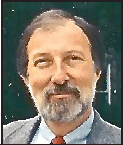It is Saturday, early, and I’m sitting at our rustic, planked, dining room table watching the sun rise behind Lady’s Island. This morning I’ve got my coffee, tangerine and the prospect of some mimosa-infused conversation.
Later this morning my wife and I will attend a fundraising brunch hosted by the Open Land Trust. For me brunch means mimosas, quiche and, assuming one doesn’t drink more than two mimosas, the prospect of doing something sentient in the afternoon.
The Open Land Trust was formed in 1971 responsive, in part, to the development that was just beginning to reshape, fill-in and fill-up our largely empty landscape. Its founding also coincided with a proposal for County-wide zoning.
The notion of County-wide zoning was not immediately embraced. Indeed, many called it a “taking.”
But the County argued that zoning was a legitimate governmental function and, now, a necessary function. And as our planners traveled the byways of Beaufort County, it became clear that many folks (mostly on Hilton Head) were not buying into the model then being proposed.
Eventually, Hilton Head Island would (sort of) secede from Beaufort County creating a new town and its own zoning.
By 1980, home builders and land developers were a powerful voice. They quickly took up the term — Takings Legislation — and argued that critical lines, set-backs, design standards and wetland mitigation were unconstitutional. They hired lawyers and went to court when necessary and, in 1992, were successful in beating back (or diluting) the “one unit for every three acre” proposal for the parts of the County that had somehow remained rural.
Beaufort County and the South in general took up the mantle and mantra of less government, lower taxes and strong protection of private property. This fundamental notion was sometimes packaged into concepts like, “Smart Growth,” which allowed flexibility, deviations from the norm and more or less camouflaged the fast-growing divide between planners and a political culture that had a contempt for any limitation on growth.
Beaufort County’s planning history then devolved into a series of fights between developers who wanted to capitalize on a booming market and planners who wanted to direct or limit growth. Those fights played themselves out in Bluffton, on Hilton Head Island and, famously, at Palmetto Bluff.
As those fights went forward, and were mostly won by developers, newly arrived retirees from New Jersey looked around and realized that certain areas, Bluffton in particular, had become a seamless ocean of townhouses, apartments, big box retailers, nail salons and Thai take-out. They began to think that Beaufort County bore more than a passing resemblance to Bayonne, N.J.
And now the rural places in Beaufort County were isolated, relegated to St. Helena, Dale, Big Estate and several other “strategic hamlets.” The lower, South of Broad part of Beaufort County, was largely gone.
This is not to say that the efforts of the Open Land Trust have been futile. They have protected more than 25,000 acres in this area; and they currently have projects involving another 11,000 acres. There are, throughout the County, strategic tracts of land like Lemon Island, the reclaimed bluff that parallels Boundary Street, and the western approach to St. Helena Island that attest to the good they have done and are doing to preserve the essence of this place.
But if one happens to be in the vicinity of Carteret Street, say at 3 or 4 in the afternoon, one senses a “systemic” problem. What one actually sees are lined-up Expeditions and Escalades ticking over in the late afternoon sun.
These super-sized vehicles and their unhappy occupants are all waiting to cross the Beaufort River. That same scenario is played out on Ribaut Road in the Town of Port Royal. Here one sees hundreds Tundras, Tahoes and Silverados stacked up, waiting for their chance to cross the McTeer Bridge.
The newly issued Comprehensive Plan 2040 lists the need for more infrastructure (bridges) and specifies impact fees and a 1 percent sales tax. But it also warns this tried-and-true funding may need some help from buses and “Park and Ride”; bicycles and, God Help us, walking and self-ambulating methodologies.
Although the Open Land Trust has been active on Lady’s Island, maybe some old fashioned zoning involving limits on the building of houses would have helped. But Lady’s Island, parts of which have sought out the density afforded by the City of Beaufort, has gone the way of Bluffton and Bayonne.
Scott Graber is a lawyer, novelist, veteran columnist and longtime resident of Port Royal. He can be reached at cscottgraber@gmail.com.








